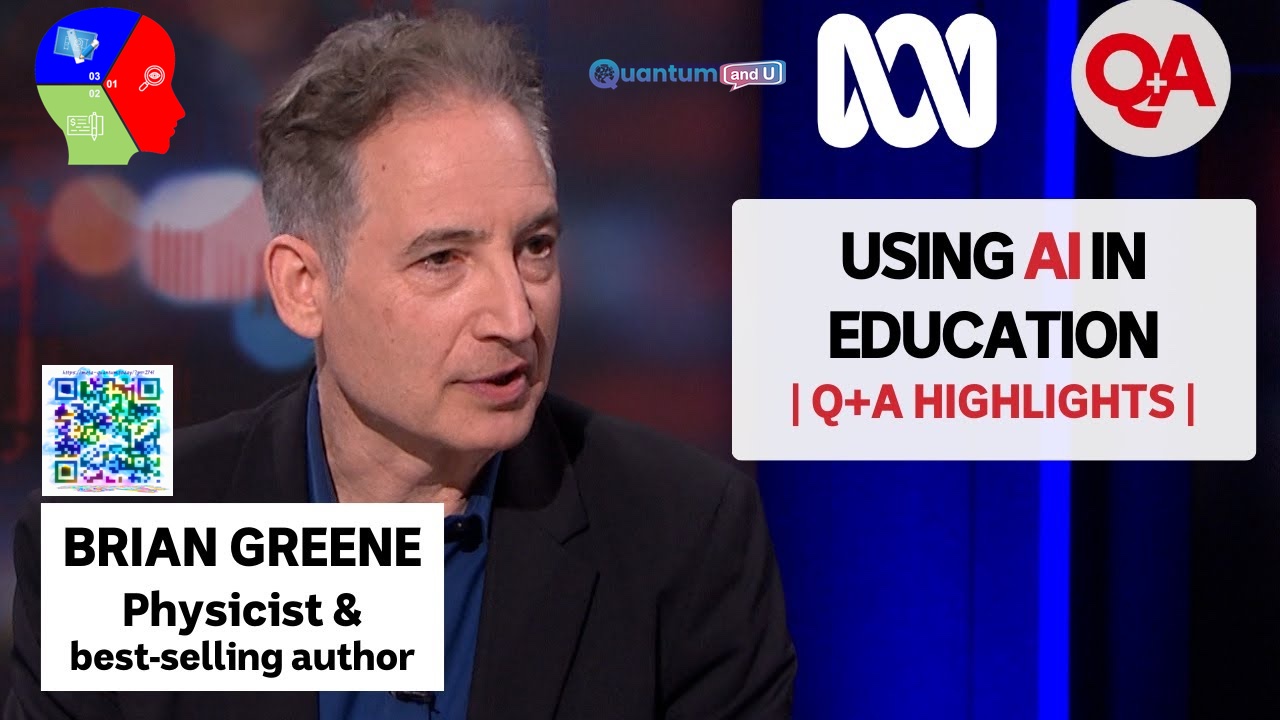
Introduction:
In this review, the panel delves into the implications of integrating AI into education, particularly focusing on assessment systems.
The conversation revolves around whether the current education assessment methods need an overhaul in the face of AI advancements.
Q+A by Australian Broadcasting Corporation that focuses mostly on politics but ranges across all of the big issues that set Australians thinking, talking and debating.
It is driven by interaction: Q+A provides a rare opportunity for Australian citizens to directly question and hold to account politicians and key opinion leaders in a national public forum and Q+A is broadcast live so that not only the studio audience but also the wider audience can get involved.
The aim to create a discussion that is constructive, that reflects a diverse range of views and that provides a safe environment where people can respectfully discuss their differences. It’s impossible to represent every view on a single panel or in one audience but committed to giving participants a fair go.
In order to be as inclusive and diverse as possible, the program is presented from a range of locations around the country and all Australians are encouraged to get involved through social media as well as by joining the audience.
Video about using AI in Education:
Key Sections:
- Overhauling Assessment Systems: Brian Green suggests that the need to revamp assessment systems predates the rise of AI. Educators should embrace AI tools rather than shun them, encouraging students to become adept at utilizing them effectively.
- Balancing AI Assistance with Critical Thinking: Concerns are raised about the potential loss of critical thinking skills if AI is solely relied upon for tasks like essay writing. The discussion emphasizes the importance of maintaining human creativity and nuanced understanding in education.
- Innovative Teaching Approaches: The conversation shifts towards innovative teaching methods that incorporate AI tools. Suggestions include structuring assignments to require collaboration between students and AI, fostering deeper engagement and creativity.
- Examples of Progressive Education Practices: Examples from various schools highlight how educators are already integrating AI into the classroom effectively. Methods such as recording lectures for at-home learning and creating chatbot discussions demonstrate the potential of AI to enhance learning experiences.
Impact of using AI in Education and opportunities in SEA:
AI has the potential to significantly impact education in Southeast Asia, offering exciting opportunities to address the region’s needs. Here’s a breakdown of the positive effects and promising avenues for the future:
Impact
- Personalized Learning: AI can tailor learning experiences to individual student needs. Imagine AI tutors analyzing student performance and suggesting customized exercises or adjusting difficulty levels. This caters to different learning styles and paces, maximizing student potential.
- Accessibility Boost: AI-powered tools can bridge the gap for students in remote areas or those with disabilities. Text-to-speech conversion can assist visually impaired students, while virtual tutors can provide additional support where physical teachers are scarce.
- Teacher Empowerment: AI can free up educators’ time by handling administrative tasks like grading or scheduling. This allows teachers to focus on more strategic aspects like lesson planning and providing personalized feedback to students.
Opportunities
- Language Learning: AI can personalize language learning journeys. Imagine an AI program that tailors lessons to a student’s native language and interests, making the process more engaging and effective.
- Early Childhood Development: AI-powered games and interactive tools can make learning fun and engaging for young children, fostering a love of learning at a crucial stage.
- Assessment and Feedback: AI can analyze student performance data to identify areas of strength and weakness. This allows teachers to intervene early and provide targeted support, improving learning outcomes.
Challenges to Consider
- Digital Divide: Unequal access to technology could exacerbate existing educational disparities. Southeast Asian nations need to invest in digital infrastructure to ensure everyone benefits from AI-powered education.
- Teacher Training: Educators need training to effectively integrate AI tools into their teaching practices. This will ensure teachers leverage AI’s potential while maintaining a human touch in the classroom.
- Data Privacy: Careful data management is crucial. Regulations and best practices need to be established to ensure student data privacy is protected.
Conclusion:
The panel concludes that AI integration in education should not be feared but embraced as a tool for enhancing learning outcomes. Educators play a crucial role in devising creative assignments that leverage AI while maintaining the importance of critical thinking and human engagement. The future of education lies in innovative approaches that blend technology with traditional teaching methods.
By addressing these challenges, Southeast Asia can harness the power of AI to create a more inclusive and effective education system for all.
Key Takeaways:
- Overhauling assessment systems is crucial, with or without AI.
- Embrace AI tools to empower students and foster creativity.
- Balance AI assistance with the preservation of critical thinking skills.
- Innovative teaching approaches can maximize the benefits of AI in education.
- Educators should learn from progressive practices already implemented in schools.


